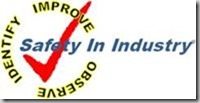Task Based vs Activity Based Safe Work Method Statements.
Guest Post by Craig Clancy from www.safetyinindustry.com.au
What is a Safe Work Method Statement (SWMS)?
Every construction worker by now must have either heard, read or participated in the development of a Safe Work Method Statement.
But what is a SWMS all about?
Under the Model regulations (Australia) which a number of States and Territories have adopted notes that a Person Conducting a Business or Undertaking (PCBU) has a duty under the Regulations to manage risks to health and safety. It requires duty-holders to identify hazards, apply and maintain a hierarchy of risk control measures.
The primary purpose of a SWMS is to enable supervisors and workers to understand the methods that have been developed, by the workers undertaking the activity, to carry out the high risk construction work in a safe and healthy manner. The SWMS should set out the work activities in a step by step logical sequence and identifies hazards and describes control measures.
SWMS development over the years has been a maturing one. As with all systems, a continuous improvement approach is vital to reducing the risks of incidents and injury in the workplace. Most of the SWMS in the workplace have evolved from the era of developing a SWMS for a particular task; a high risk task such as working at heights will see SWMS produced for working in an EWP, or Excavation will see a SWMS produced for the trench or hole and another for the mobile plant use and another for working in a confined space.
The results of these splintered or piece-meal SWMS is that organisations try to consolidate a number of task SWMS into the activity that they are undertaking. The end result is several separate unrelated SWMS that mean little to the workers and do not provide a fluid approach to identification of Hazards and effective implementation of controls.
From what we see in the industry, organisations have tried to ‘AUTOMATE’ the development of the SWMS down to a mechanical process. Whilst this is acceptable in some jurisdictions, I see a number of inherent issues with this process.
- There is multiple overlapping of controls across a number of SWMS thus making it difficult for the responsible person to effectively identify what is required to minimise the risks to acceptable levels.
-
Authorised persons who have to sign off on these SWMS – do they vet or review each SWMS individually or try to view the pack of SWMS as 1 big SWMS.
-
How are workers effectively consulted into the development of the SWMS (s) for the activity they are about to embark on. How do they effectively identify the Hazards they are about to encounter let alone control them.
-
How does the interaction of other activities effect the SWMS developed.
-
How does the interaction of the task with other contractors effect the SWMS or process.
-
The SWMS needs to be easily read and understood by the activity participants.
-
It is NOT an activity based approach to the development of a SWMS.
Even though our clients loath us when we say this, but at some point in time, SOMEONE MUST take time out to THINK about the process of undertaking the activity… and doing it safely. Careful planning MUST go into how the activity will be safely undertaken with the least exposure to inherent Hazards. When the activity step by step process is identified, the identification of the Hazards and Risks can be readily analysed.
Any activity can be broken down into a series of basic steps that will allow a step by step analysis of each part of the activity for hazards and potential incidents.
This is an ACTIVITY based SWMS and one that includes all the individual high risk tasks into the step by step sequence of the ACTIVITY.
The advantages of this ACTIVITY based approach are;
- A sequential methodology for the implementation of controls based on the sequence of construction in 1 continual document.
A single vet or review of the whole SWMS by responsible personnel
An easy approach to the development with co-workers and workers involved with the activity.
An easily read and fluid document that workers are able to read and understand.
Readily adaptable to the inherent environment for each specific project.
It is an ACTIVITY based approach.
If your SWMS are a little out dated, why not try the Activity based approach to Hazard identification, risk analysis and control. Integrate all your individual task specific high risk SWMS into one fluid activity based SWMS.
If you need some friendly and professional advice to consolidate your SWMS, please don’t hesitate to call us and we will be more than delighted to assist you in whatever way we can.
Stay Safe
Best Regards
Craig Clancy
B.App. Sc – Construction Management
Director
Safety in Industry
M:0458 797 836
E: craig@safetyinindustry.com.au
W: www.safetyinindustry.com.au
f: www.facebook.com/safetyinindustry
From Industry – For Industry



Do you have any thoughts? Please share them below